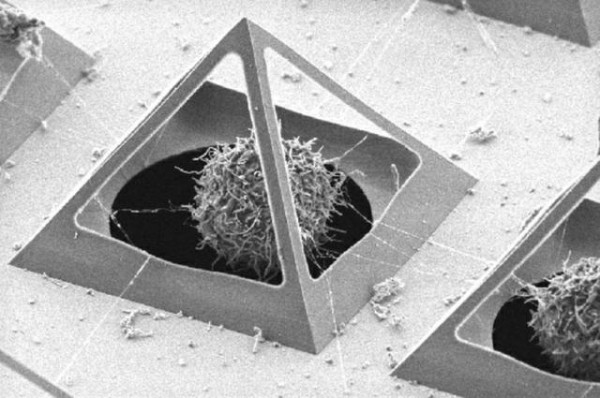Cells are three-dimensional. But most of the cell studies take place in 2D. Some researchers at the University of Twente in the Netherlands are about to bring a massive change in the trend. These researchers have created some nifty pyramid cages to hold living cells in place in order to study them more naturally and expecting the studies will be more worthy than usual study methods.
Usually cells are being studied using a flat Petri dish. So researchers can see them in a flat environment and can’t study them thoroughly. So to study them in a better way, researchers from the University of Twente created some cages by placing nitrides over silicon pits. After that, they the peeled away most of the material around it. But still some of the material remained in the corners, forming a pyramid. These pyramids had holes in the sides and were close together. Therefore, the cells were able to interact with most of its parts as they naturally do, but in a better way. The pyramid cages allowed researchers to keep cells where they wanted them. This was helping researchers to study these living cells, captured in pyramid cages, in a better way.
Researchers believe that the technology could be a useful tool for studying tissue regeneration in the future. Hence, the Dutch scientists are expecting to develop extensions to this technology.
Source : Alphagalileo
Thanks To : New Scientist
[ttjad keyword=”hot”]


